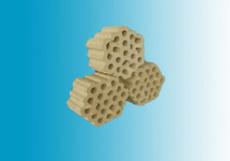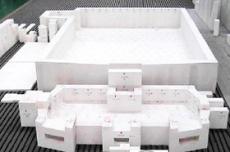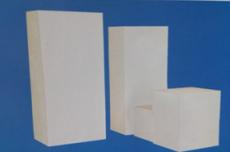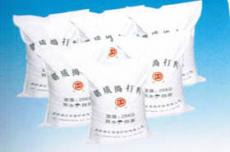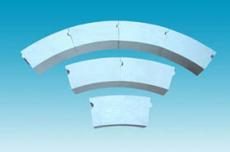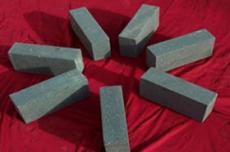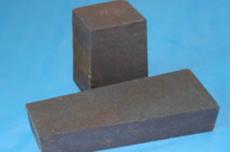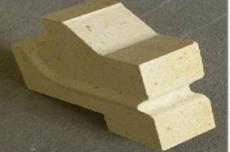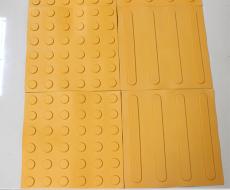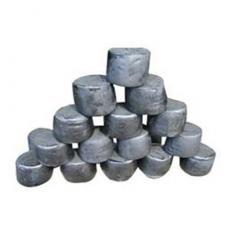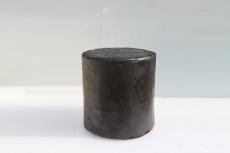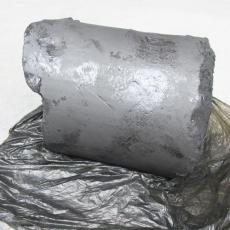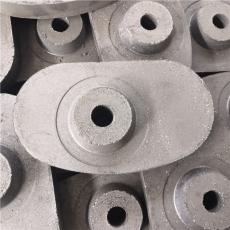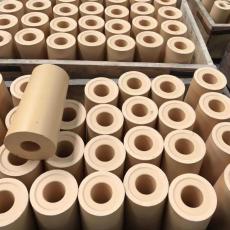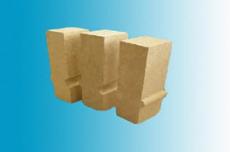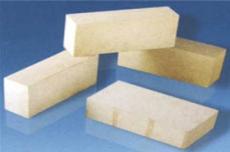
After the various raw materials of the castables are determined, they must first be reasonably matched and then stirred to form a mixture. Some mixtures also need to be trapped. According to the properties of the mixture, appropriate methods are adopted to cast and shape it and maintain it. Finally, the hardened structure is put into use after proper baking treatment.
01Mixture of granular materials
For granular materials of various particle sizes, they are matched according to the principle of close stacking. Since castables are mostly used to form various structures with larger cross-sections and to make large blocks, the limit particle size of granular materials can be increased accordingly. However, in order to avoid the excessive expansion difference between coarse particles and cement stone during the heating process and destroy the combination of the two, in addition to selecting low-expansion granular materials, the limit particle size should also be appropriately controlled. It is generally believed that vibration molding should be controlled below 10~15mm; machine pressure molding should be less than 10mm, and large products or integral structures should not be greater than 25mm; all should be less than 1/5 of the minimum cross-sectional size. The proportion of each level of granular material is generally 3~4 levels, and the total amount of granular material accounts for 60%~70%. Powdered admixtures with stable volume and high fineness at high temperature, especially those with a part of ultrafine powder, have a positive effect on the room temperature and high temperature properties of castables. They should be added in appropriate quantities. It is generally believed that the amount of fine powder should be between 30%-40%.
02 Determination of binders and accelerators
The type of binder depends on the requirements for the properties of structures or products, should correspond to the materials of the selected granular and powdered materials, and is also related to the construction conditions. When manufacturing castables composed of non-alkaline granular materials, cement is generally used as a binder. When using cement as a binder, the requirements for the room temperature and high temperature properties of the hardened body should be taken into account. Cement with fast hardening, high strength and low fusible content should be selected as much as possible. The amount should be appropriate, and it is generally believed that it should not exceed 12%~15%. In order to avoid the reduction of the medium-temperature strength of the hardened body and improve its high-temperature resistance, the amount of cement should be reduced as much as possible and replaced by ultra-fine powder admixtures. If phosphoric acid or phosphate is used as a binder, the dilute phosphoric acid or phosphate solution of the corresponding concentration should be used according to the requirements of the properties of the hardened body of the castable and the construction characteristics. Phosphoric acid with a concentration of about 50% is appropriate, and its added amount is generally controlled between 11% and 14%. If aluminum phosphate is used as a binder, when Al2O3/P2O5 (molar ratio) is 1:3.2 and the relative density is 1.4, the added amount should be controlled at about 13%. The castable prepared with this binder solidifies slowly and has very low strength before heat treatment, so a small amount of alkaline materials is often added to promote its solidification. If ordinary high-alumina cement is used as a coagulant, the general addition amount is 2%-3%. If water glass is used, its modulus and density should be controlled. When the modulus is 2.4-3.0 and the relative density is 1.36~1.40g/cm3, the general dosage is 13%~15%. If sodium silicofluoride hardening accelerator is used, its dosage generally accounts for 10%~12% of water glass. Other binders and their dosages are determined according to the characteristics of the lean material, the properties of the hardened body and the construction requirements.
03 Water consumption
All kinds of castables contain water corresponding to the amount of binder. Water can be added after the binder and the lean material form a mixture. For example, calcium aluminate cement, which is easy to hydrate and set quickly, is often done in this form; water can also be mixed with the binder in advance to make a certain concentration of aqueous solution or sol and added. For example, for binders that need to be hydrolyzed in advance to have adhesiveness, this is mainly done in this form. When the binder does not deteriorate after reacting with water, in order to make the binder evenly distributed in the castable, it is often mixed with water in advance, such as the aforementioned phosphoric acid and water glass. Generally, the water-cement ratio of castables made of aluminum silicate clinker combined with ordinary high-aluminum cement is mostly 0.4~0.65. Among them, for vibration molding, 0.5~0.65 is often used, and the moisture content of the mixture is 8%~10%; for machine pressing molding, about 0.4 is often used, and the moisture content of the mixture is 5.5%~6.5%. In order to reduce the moisture in the castable and increase the density of the hardened body, appropriate plasticizers and water reducers should be added to the castable.
04 Curing
After the castable is plasticized, appropriate measures must be taken to cure it according to the hardening characteristics of the binder to promote its hardening. Calcium aluminate cement should be cured under appropriate temperature and humid conditions. Among them, ordinary high-aluminum cement should first be covered at a lower temperature (less than 35°C), and then watered or soaked in water for 3 days after setting; low-calcium high-aluminum cement should be cured for 7 days, or steam cured for 24 hours. Some metal salts, especially organic salts, must be dried and baked. For example, if it is made of water glass, it should be stored in air at 15-25℃ for 3-5 days without moisture. It can also be baked below 300℃. However, it must not be cured under humid conditions, let alone watering, because silica gel absorbs water and expands, loses its adhesiveness, and its strength will drop sharply after water dissolves. If it is made of phosphate, it can be cured in air above 20℃ for more than 3 days, and then baked at 350-450℃; it is not allowed to be damp or watered before baking. The curing system of refractory concrete is shown in Table 1. When the castable constitutes the lining and furnace body of thermal equipment, it should generally be baked before the first use so that the physical water and crystal water therein can be gradually removed, so that its volume and certain properties can reach a stable state during use and achieve a certain degree of sintering. Whether the sintering system is appropriate has a great impact on the service life. The basic principle of formulating the baking system is that the heating rate should be compatible with the possible dehydration and other phase changes and deformation. In certain temperature stages where the above changes occur rapidly, the temperature should be slowly increased or even kept warm for a considerable time. If the material is not baked properly or is not baked, and is immediately heated up and put into use, it is very easy to produce serious cracks, even loose collapse, and even explosion may occur in extremely large and thick parts. The baking speed of the hardened body varies depending on the binder and the cross-sectional size of the structure.
For cement castables, it can be roughly divided into three stages: (1) Expelling free water. Heating to 110~150℃ at a rate of 10~20℃/h and keeping warm for 24~48h. (2) Expelling crystallized water. Heating to 350℃ at a rate of 15-30℃/h and keeping warm for 24~48h. (3) Heat-averaging stage. Heating to 600℃ at a rate of 15~20℃/h and keeping warm for 16~32h; then, heating to the working temperature at a rate of 20~40℃/h. For structures with large cross-sections, the heating speed is at the lower limit and the insulation is at the upper limit; for structures with small cross-sections, the opposite is true.
